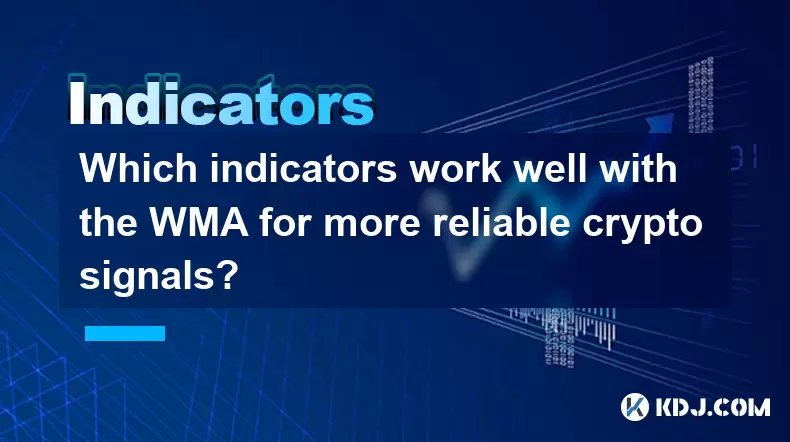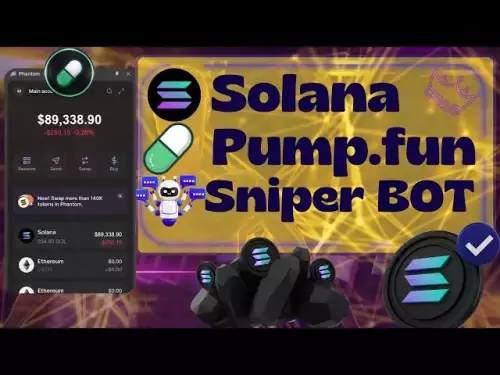-
 Bitcoin
Bitcoin $115100
-1.30% -
 Ethereum
Ethereum $4758
-1.70% -
 XRP
XRP $3.027
-2.19% -
 Tether USDt
Tether USDt $0.9998
-0.01% -
 BNB
BNB $883.2
-1.42% -
 Solana
Solana $204.0
2.62% -
 USDC
USDC $1.000
0.02% -
 Dogecoin
Dogecoin $0.2371
-0.97% -
 TRON
TRON $0.3612
-1.24% -
 Cardano
Cardano $0.9128
-2.19% -
 Chainlink
Chainlink $26.13
-3.93% -
 Hyperliquid
Hyperliquid $44.73
0.90% -
 Sui
Sui $3.715
-0.56% -
 Stellar
Stellar $0.4153
-2.41% -
 Ethena USDe
Ethena USDe $1.000
-0.04% -
 Bitcoin Cash
Bitcoin Cash $588.9
-2.06% -
 Avalanche
Avalanche $25.91
3.27% -
 Hedera
Hedera $0.2525
-1.45% -
 Litecoin
Litecoin $120.9
-1.35% -
 UNUS SED LEO
UNUS SED LEO $9.607
0.30% -
 Toncoin
Toncoin $3.382
-0.31% -
 Shiba Inu
Shiba Inu $0.00001329
-0.38% -
 Uniswap
Uniswap $11.38
-1.67% -
 Polkadot
Polkadot $4.222
2.83% -
 Aave
Aave $354.5
4.93% -
 Dai
Dai $0.0000
0.00% -
 Bitget Token
Bitget Token $4.704
-1.49% -
 Cronos
Cronos $0.1565
1.83% -
 Ethena
Ethena $0.7463
1.55% -
 Monero
Monero $265.8
-0.39%
Which indicators work well with the WMA for more reliable crypto signals?
The Weighted Moving Average (WMA) enhances crypto trading by prioritizing recent prices, and when combined with RSI, MACD, Bollinger Bands, and volume indicators, it delivers more reliable, high-probability signals.
Aug 13, 2025 at 11:35 am

Understanding the Weighted Moving Average (WMA) in Crypto Trading
The Weighted Moving Average (WMA) is a technical indicator that assigns greater importance to recent price data, making it more responsive to new information compared to the Simple Moving Average (SMA). In the fast-moving cryptocurrency markets, this sensitivity helps traders detect trend changes earlier. The calculation of WMA involves multiplying each price point by a weighting factor, with the most recent prices receiving the highest weights. This makes the WMA particularly effective during volatile periods common in crypto trading. Because it emphasizes recent data, it can generate earlier entry and exit signals than other moving averages.
When used alone, the WMA can produce false signals during sideways or choppy market conditions. This is where combining it with complementary indicators becomes essential. The goal is to filter out noise and confirm the validity of the signals generated by the WMA. By pairing the WMA with other tools that measure momentum, volatility, or volume, traders can increase the reliability of their trading decisions.
Combining WMA with the Relative Strength Index (RSI)
One of the most effective indicators to pair with the WMA is the Relative Strength Index (RSI). The RSI measures the speed and change of price movements on a scale from 0 to 100, helping identify overbought or oversold conditions. When the WMA indicates a potential trend reversal—such as a price crossing above or below the WMA line—traders can use the RSI to confirm whether the market is oversold (below 30) or overbought (above 70).
- Check if the price has crossed above the WMA, suggesting bullish momentum.
- Confirm that the RSI is rising from below 30, indicating the asset was oversold and momentum is shifting upward.
- For bearish signals, ensure the price has crossed below the WMA and the RSI is falling from above 70.
- Avoid trading if the RSI is in the neutral zone (30–70), as this may suggest lack of conviction.
This combination helps avoid false breakouts. For example, a price crossing above the WMA during a strong downtrend might seem like a buy signal, but if the RSI remains below 50 and shows no momentum shift, the signal is likely unreliable. The synergy between the WMA’s trend detection and the RSI’s momentum analysis creates a more robust trading strategy.
Using the MACD to Confirm WMA Signals
The Moving Average Convergence Divergence (MACD) is another powerful companion to the WMA. The MACD plots the difference between two exponential moving averages and includes a signal line and histogram to visualize momentum. When the WMA suggests a trend change, the MACD can validate whether the momentum is strong enough to sustain the move.
- Observe a bullish crossover on the WMA (price moving above the line).
- Look for the MACD line to cross above its signal line, confirming upward momentum.
- Check that the MACD histogram is increasing in height, showing strengthening bullish pressure.
- For bearish setups, ensure the price drops below the WMA while the MACD line crosses below the signal line.
The MACD’s ability to detect divergences adds another layer of confirmation. If the price makes a higher high but the MACD makes a lower high, it signals weakening momentum, even if the WMA suggests continuation. This divergence can warn traders to avoid entering long positions despite a seemingly strong WMA signal.
Enhancing Signals with Bollinger Bands
Bollinger Bands consist of a middle band (typically a SMA) and two outer bands that represent standard deviations from the mean. They are excellent for assessing volatility and potential price extremes. When combined with the WMA, they help determine whether a WMA crossover occurs in a high-volatility environment, increasing the signal’s reliability.
- When the price touches or crosses the lower Bollinger Band and simultaneously moves above the WMA, it may indicate a strong reversal opportunity.
- Conversely, a touch of the upper band combined with a drop below the WMA can signal a top.
- Narrowing bands (the “squeeze”) followed by a breakout in price and a WMA cross often precede strong trends.
The convergence of volatility contraction and WMA movement provides a high-probability setup. For instance, after a period of low volatility (narrow bands), a sudden expansion accompanied by a decisive WMA crossover can signal the start of a new trend. This combination is particularly useful in crypto markets, where explosive moves often follow consolidation phases.
Leveraging Volume Indicators with WMA
Volume is a critical factor in validating price movements. The On-Balance Volume (OBV) or Volume Weighted Average Price (VWAP) can be paired with the WMA to confirm whether a trend has strong backing from market participants.
- When the price crosses above the WMA, check if OBV is also trending upward, indicating buying pressure.
- A rising VWAP alongside a bullish WMA crossover suggests institutional or large-scale participation.
- If volume remains flat or declines during a WMA crossover, the move may lack sustainability.
For example, during a pump in a low-cap altcoin, the price might cross above the WMA, but if OBV shows no significant increase, the rally could be driven by low-volume speculation rather than genuine demand. The alignment of volume confirmation with WMA signals reduces the risk of falling for “pump and dump” schemes common in crypto.
Practical Setup: How to Apply These Combinations on Trading Platforms
To implement this multi-indicator strategy on platforms like TradingView or Binance, follow these steps:
- Open a crypto chart (e.g., BTC/USDT).
- Add the WMA (set to 20 periods for short-term or 50 for medium-term).
- Overlay the RSI (14-period standard) at the bottom of the chart.
- Add the MACD (12, 26, 9 settings) in a separate panel.
- Apply Bollinger Bands (20-period, 2 standard deviations).
- Include OBV or VWAP depending on your trading style.
Adjust the colors and styles for clarity. For instance, set the WMA to a bright green line, RSI thresholds to horizontal dashed lines at 30 and 70, and MACD crossovers to histogram color changes. Use alerts to notify you when price crosses the WMA and RSI exits oversold/overbought zones simultaneously.
Frequently Asked Questions
What timeframes work best when combining WMA with RSI and MACD in crypto trading?
The 1-hour and 4-hour charts are widely used for day trading and swing trading. These timeframes reduce market noise while still providing timely signals. Lower timeframes like 5-minute charts can be used for scalping but require tighter stop-losses due to increased volatility.
Can the WMA be used effectively in ranging markets?
The WMA tends to produce false signals in sideways markets due to its sensitivity. It performs best in trending environments. To mitigate this, use Bollinger Bands to identify range-bound conditions and avoid trading WMA crossovers when the bands are flat and price oscillates around the middle line.
Is it necessary to use all the mentioned indicators together?
No. Traders should select combinations based on their strategy. For momentum-focused trading, WMA + RSI + MACD works well. For volatility-based entries, WMA + Bollinger Bands may suffice. Overloading charts with too many indicators can lead to confusion and conflicting signals.
How do I adjust WMA settings for different cryptocurrencies?
More volatile altcoins may require shorter WMA periods (e.g., 10 or 14) to stay responsive. For stablecoins or Bitcoin, longer periods (20–50) are often more effective. Backtest different settings on historical data to find optimal values for each asset.
Disclaimer:info@kdj.com
The information provided is not trading advice. kdj.com does not assume any responsibility for any investments made based on the information provided in this article. Cryptocurrencies are highly volatile and it is highly recommended that you invest with caution after thorough research!
If you believe that the content used on this website infringes your copyright, please contact us immediately (info@kdj.com) and we will delete it promptly.
- Whitelist Frenzy: Is This the Top Meme Coin of 2025?
- 2025-08-24 08:45:22
- Ruvi AI: The AI Token Igniting a Cardano-esque Rally?
- 2025-08-24 07:45:12
- Altcoins in a Market Dip: Is Polygon (MATIC) Poised for a Reversal?
- 2025-08-24 07:05:13
- Crypto, Pepe, and Investment: Navigating the Meme Coin Mania in 2025
- 2025-08-24 06:45:29
- VanEck's JitoSOL ETF: A New Era for Solana and Institutional Crypto
- 2025-08-24 07:45:12
- Dogecoin, Shiba Inu, and the Rise of New Crypto Contenders
- 2025-08-24 08:05:30
Related knowledge

What does it mean when the +DI and -DI cross frequently in the DMI indicator but the ADX is flattening?
Aug 11,2025 at 03:15am
Understanding the DMI Indicator ComponentsThe Directional Movement Index (DMI) is a technical analysis tool composed of three lines: the +DI (Positive...

What does the sudden appearance of a "dark cloud cover" candlestick pattern during an uptrend indicate?
Aug 13,2025 at 11:35am
Understanding the 'Dark Cloud Cover' Candlestick PatternThe dark cloud cover is a bearish reversal pattern in technical analysis that typically appear...

What does it mean when the moving average, MACD, and RSI all send buy signals simultaneously?
Aug 11,2025 at 01:42pm
Understanding the Convergence of Technical IndicatorsWhen the moving average, MACD, and RSI all generate buy signals at the same time, traders interpr...

What does it mean when both the KDJ indicator and the RSI show overbought signals simultaneously?
Aug 13,2025 at 11:35am
Understanding the KDJ Indicator in Cryptocurrency TradingThe KDJ indicator is a momentum oscillator derived from the Stochastic Oscillator, widely use...

What does it mean when the price is trading above the SAR indicator but the red dots are densely packed?
Aug 09,2025 at 11:49pm
Understanding the SAR Indicator and Its Visual SignalsThe SAR (Parabolic Stop and Reverse) indicator is a technical analysis tool used primarily to de...

What does it mean when the candlestick chart forms a "Morning Star" but trading volume is sluggish?
Aug 12,2025 at 06:28pm
Understanding the Morning Star Candlestick PatternThe Morning Star is a three-candle bullish reversal pattern commonly observed in cryptocurrency pric...

What does it mean when the +DI and -DI cross frequently in the DMI indicator but the ADX is flattening?
Aug 11,2025 at 03:15am
Understanding the DMI Indicator ComponentsThe Directional Movement Index (DMI) is a technical analysis tool composed of three lines: the +DI (Positive...

What does the sudden appearance of a "dark cloud cover" candlestick pattern during an uptrend indicate?
Aug 13,2025 at 11:35am
Understanding the 'Dark Cloud Cover' Candlestick PatternThe dark cloud cover is a bearish reversal pattern in technical analysis that typically appear...

What does it mean when the moving average, MACD, and RSI all send buy signals simultaneously?
Aug 11,2025 at 01:42pm
Understanding the Convergence of Technical IndicatorsWhen the moving average, MACD, and RSI all generate buy signals at the same time, traders interpr...

What does it mean when both the KDJ indicator and the RSI show overbought signals simultaneously?
Aug 13,2025 at 11:35am
Understanding the KDJ Indicator in Cryptocurrency TradingThe KDJ indicator is a momentum oscillator derived from the Stochastic Oscillator, widely use...

What does it mean when the price is trading above the SAR indicator but the red dots are densely packed?
Aug 09,2025 at 11:49pm
Understanding the SAR Indicator and Its Visual SignalsThe SAR (Parabolic Stop and Reverse) indicator is a technical analysis tool used primarily to de...

What does it mean when the candlestick chart forms a "Morning Star" but trading volume is sluggish?
Aug 12,2025 at 06:28pm
Understanding the Morning Star Candlestick PatternThe Morning Star is a three-candle bullish reversal pattern commonly observed in cryptocurrency pric...
See all articles

























































































